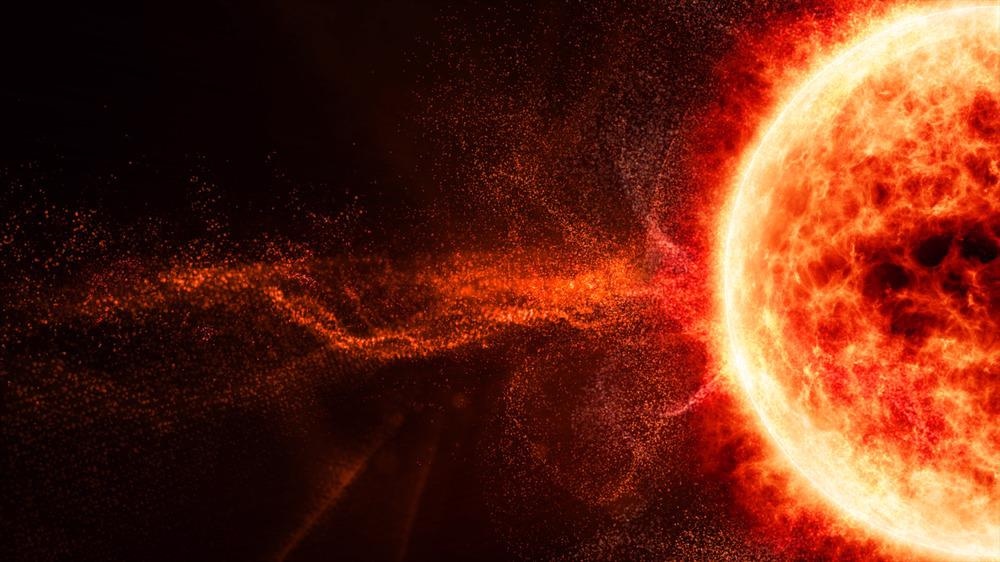NASA has financially supported a five-year outreach program in collaboration with the Polarimeter to UNify the Corona and Heliosphere (PUNCH)—a solar mission headed by the Southwest Research Institute (SwRI).

Image Credit: Color4260/Shutterstock.com
Also led by SwRI, the PUNCH Outreach Program has joined hands with five planetariums and science centers located in four different states and other multicultural collaborators in the southwestern United States.
To create a nationwide impact, the outreach team is establishing a deep connection with NASA-funded educational programs and with other solar missions, such as Parker Solar Probe (PSP). The team will work with researchers from PUNCH and PSP to create a suite of robust products and events with an “Ancient and Modern Sun-Watching” theme.
There is worldwide evidence that all humans are descended from Sun-watching cultures. Our theme portrays NASA’s exploration of the Sun as a natural extension of humanity’s long-lived dedication to observing the Sun’s rhythms and mysteries. In this way, we can reveal how NASA science is relevant to the cultural history of diverse peoples.
Dr Cherilynn Morrow, Consultant, Southwest Research Institute
Morrow is also a director of the PUNCH Outreach program.
The 2023 launch of PUNCH will offer better insights into the Sun’s corona, the outer atmosphere that turns visible during total solar eclipses. The project will analyze how the corona transforms into “solar wind” where charged particles and magnetic fields move fast outward from the Sun and fills the solar system while interacting with the planets.
PUNCH cameras are uniquely capable of imaging the solar wind continuously from the time it leaves the Sun until it engulfs our world, affecting spacecraft, astronauts and causing auroral lights. This Sun-Earth connection offers pathways for sharing our science more broadly. I am so pleased with the capability of our outreach team and the inclusivity of our outreach program.
Dr Craig DeForest, Study Principal Investigator, Space Science and Engineering Division, Southwest Research Institute
The program's motto is “shining a new light on diverse views of the Sun,” regardless of whether it is scientific, cross-cultural, artistic, historical, or the outcome of first-person observations.
Using solar eclipses visible from the United States in 2023 and 2024, the researchers will encourage public engagement in multicultural, arts-integrated opportunities to understand more about NASA-related science, technology, engineering, and mathematics (STEM).
The PUNCH outreach derives specific inspiration from Chaco Canyon, a cross-cultural location in the New Mexico high desert where a total solar eclipse in 1097 may have been registered as rock art. Also, this is a place where the examples of age-old Sun-watching practices are more.
Chaco also features 1000-year-old remnants of monumental architecture constructed by Ancestral Puebloan people and organized with their knowledge of the Moon and Sun movements.
Furthermore, the history of Chaco is intertwined with that of the Navajo people, including the indigenous people of Central America and Mexico.
This project’s emphasis on ancestral connections to Chaco Canyon can provide a valuable way for our youth at Acoma and Laguna Pueblos to experience NASA science and envision a future career in science without losing touch with their culture.
Joe Aragon, PUNCH Outreach Partner
Joe Aragon is also a retired STEM educator and tribal leader from the Acoma Pueblo situated in New Mexico.
The PUNCH Outreach highlights the collaboration with different collaborators to engage people presently underrepresented in STEM fields. The program looks to benefit and learn from Native Americans and Hispanic youth and their families, Girl Scouts pursuing STEM-related patches and badges, and visually or blind, impaired learners.
“Our science team is really excited about contributing to the outreach effort. We have a high percentage of women scientists compared to other NASA missions and this makes us a great source of role models to support our STEM collaborations with Girl Scout Councils,” Stated PUNCH Project Scientist Dr. Sarah Gibson of the High-Altitude Observatory in Boulder.
Apart from developing live-interaction planetarium shows with kinesthetic, musical, and social learning dimensions, PUNCH Outreach is trying to translate dramatic solar events into useful tactile experiences. This is done in consultation with Jeff Killebrew, a science teacher at the New Mexico School for the Blind and Visually Impaired.
To execute the PUNCH Outreach Program, SwRI has partnered with the Fiske Planetarium at the University of Colorado in Boulder, Clark Planetarium in Salt Lake City, the New Mexico Museum of Natural History and Science, and the National Hispanic Cultural Center in Albuquerque, the New Mexico Museum of Space History in Alamogordo, and the Lowell Observatory in Flagstaff, Arizona.
The Small Explorers program from NASA offers frequent flight opportunities for a global-standard scientific investigation like PUNCH. SwRI is developing and will operate the spacecraft. PUNCH instruments are being developed by SwRI, the U.S. Naval Research Laboratory, and RAL Space in England.